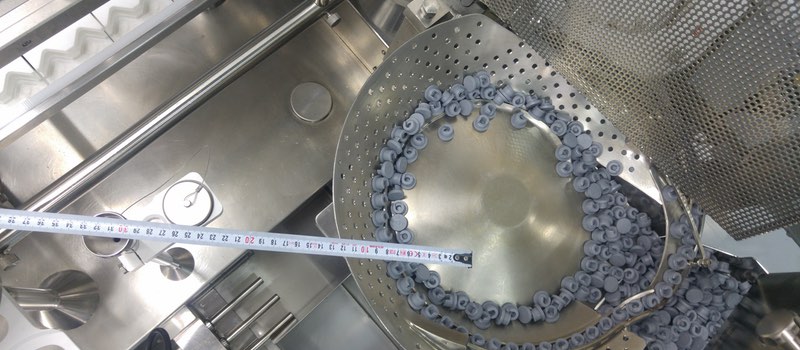To design a cleanroom monitoring system is not an easy task, but can be done easily: you can follow the recommendations in this article. Here, you will find a simple and self-explanatory guide to designing your regulatory-compliant cleanroom monitoring system in four stages, including planning, system design, system installation and system use and maintenance.
The focus of this guide is on non-viable particle monitoring system in general. However, many points can be applied to viable monitoring.
Stage 1: How to plan a cleanroom monitoring system
a) Know your industry standards and guidelines.
Current standards and regulations can give you detailed information about your cleanroom monitoring system needs and its solutions. Below are a list of standards and guidelines available today.
- ISO 14644-2: 2015. Cleanrooms and associated controlled environments - Part 2: Monitoring to provide evidence of cleanroom performance related to air cleanliness by particle concentration. This is the only standard available in ISO regarding monitoring of air cleanliness by particle concentration. The latest document, the 2015 version, is now offering a risk-based approach with a section about "creating, implementing and maintaining a monitoring plan".
- EU GMP Annex 1. The Rules Governing Medicinal Products in the European Union. EU GMP Annex 1 has a section called "Cleanroom and clean air device monitoring", and offers information about requirements and how to achieve this.
- FDA Guidance for Industry Sterile Drug Products Produced by Aseptic Processing. In this industry guideline, the US agency offers intensive information regarding environmental and particle monitoring in separate chapters.
- World Health Organization (WHO) Environmental Monitoring of Clean Rooms in Vaccine Manufacturing Facilities.
Even if this document looks specific to vaccine manufacturing, you will find information about routine monitoring and sampling plan.
- PDA Technical Report (TR) No.13R Fundamentals of an Environmental Monitoring Program.
The PDA offers useful information, and TR-13R is one of the best documents to achieve a proper monitoring plan. Not only it summarises requirements that you need to follow but also offers you a sample plan and examples.
In addition to this standard and regulations, there are reference documents available in PDA, ISPE and local authorities that you are audited by.
b) Do your pre-risk assessment
Risk assessment is the most critical step to plan and achieve the right monitoring solution. As described in ISO 14644-2, the selection of an appropriate risk assessment tool (HACCP, FMEA, PHA, FTA, HAZOP, etc.) will be your first step. At Lighthouse Worldwide Solutions, we generally use HACCP (Hazard Analysis and Critical Control Points) to define all non-viable monitoring critical control points, and FMEA (Failure Mode and Effects Analysis) to list urgency of this critical monitoring points and their ranking based on an accept/reject criteria. The ICH 9 Quality Risk Management document will help you to prepare your execution roadmap.
Worth noting that during FMEA, you score your probability and severity first. For probability, you should ask yourself: What is the probability of having particles at this location that will harm the product, which will end up affecting patient health? For example, if we are talking about a turntable after depyrogenation tunnel, your containers are open to ambient air, and any failure in your HVAC or personnel intervention lead to having particles inside your "sterile" product containers. For this particular location, your probability is always high.
To score your severity, you should follow the same approach. The question here is: What if I have particles inside my container? How particles will end up there? Will the result be catastrophic? Thus, your severity is, again, high. High probability with high severity puts you on Level-1 risk level. This Level-1 will be your main focus to reduce your risks.
c) Define your sample locations
After defining your risks with proper pre-risk assessment study, the next step should be defining your sample location. To reduce your risks, you will start from the highest risk locations to lower-risk zones.
In general, the following locations in sterile pharmaceutical manufacturing facilities are considered as high-risk locations:
- After tunnel exit/turntable
- Point of fill
- Stoppering
- Product transfer hatches/window for semi- stoppered lyophilised products
- Transfer CART's from/to Lyophiliser
- Lyophiliser loading
- Capping zone to reduce risk due to poorly closed stoppers after lyophilisation
- Room Grade B, including any location based on the product, personnel flow and room design
- Autoclave and steriliser exit to Grade B areas
- Sterile/aseptic manipulation zones, such as aseptic connection and under laminar airflow and Grade A.

Non-viable isokinetic sampling probe located near the stopper hooper within 30 cm
The following are important considerations:
- Defining a critical location for each isokinetic sampling probe. Being close as possible to risk location is your main motivation here. As per FDA Aseptic Processing Guideline, "representative locations normally not more than 1-foot (30cm) away from the worksite, within the airflow, and during filling/closing operations". Please note, the 30cm is like a sphere centring the isoprobe. In other words, your 30 cm distance could be lower or higher than the isoprobe, depending on the application. Container size, distance from the surface, operator intervention and possible moving parts should be considered too. In some locations, such as capping stations, powder filling points and ampoule closing flame area, the distance could be more than 30cm, especially as the vertical distance to protect your particle counter, plus not to sample material itself: chemical powder, glass flakes, aluminium dust, etc.
- Distance between your sample point and your online particle counter. Although you are using special tubing for particle sampling between isoprobe and your online particle counter, particles larger than 1 m may be trapped by your sampling tube, depending on radius and number of bends with their bending degree.
The best practice here is to place your particle counter close enough - if possible, right under your sample point - so particles will not be lost due to travel distance and curves inside the tubing. The ASTM F50 defines the maximum length: "A maximum transit tube length of three meters can be used for particles in the two-metre to ten-metre range".
ISO 14644-1:2015 defines the distance between portable particle counter and isoprobe. "For sampling particles larger than and equal to one metre, the transit tube length should not exceed the manufacturer's recommended length and diameter, and will typically be no longer than one metre in length". Even if this one- metre definition is good for monitoring locations, it is for cleanroom classification routine and not for cleanroom monitoring.
The best practice here is to place your particle counter close enough - if possible, right under your sample point
A sample tube sent by the manufacturer along with a portable particle counter is quite long, and users never cut this long tube before starting cleanroom classification. So, you can see a spiral- shape sample tube all around the cleanroom. Most probably, these operators are losing most of the 5- micron particles inside this swirl sampling tube.

Engineering study for mobile Lyophilisation Loading CART to verify correct location with scientific data
For online monitoring, we are using this sample tubes inside stainless steel tubes, so there will be a solid sampling line with controlled bending radius. And according to ASTM F50, "if a flexible transit tube is to be used, then no radius of curvature below 15 cm shall be used". This can help us avoid false counts due to probe penetration and uncontrolled sample tube shape and radius.
- Make an engineering study if necessary. Some of your locations may require additional investigation, especially if you need more statistical data between different sample points for the same risk location. Mobile freeze dryers are a good example.
Between each tray, it seems identical. However, clean air supplied by HEPA filter may act differently between them. So, using a portable particle counter and collecting data to see if they are all identical is a good practice and an example for engineering study. This method can be applied for selecting the Grade B cleanroom sampling location between several different options. Most of the time, focusing on return air area and busy areas for operators is a good approach.
- Select the most suitable solution for your application. There are different options available for particle monitoring. Built-in pump particle counters or external vacuum systems; with analogue or digital sensors; with or without display, etc. The most important feature here is self-diagnostics. Your particle counter should not only collect one-way data but also communicate with you in terms of flow status, laser health, and internal parameters like background voltage and calibration due date reminder.
Having this information will help you understand what is going on with your device before sending it to calibration once every year. It will also help prevent getting your particle counter "deaf" without you knowing when it happened. Failing to achieve this will put you and your entire data in the recent year into a very rough situation. Plus, monitoring flow rate, sensor health and laser status, are critical to maintaining data integrity.
About the author

Hasim Solmaz
Hasim Solmaz is General Manager of Lighthouse Worldwide Solutions EMEA Operations located in Istanbul, Turkey. His focus is on cleanroom design and management concepts, environmental monitoring systems, pharmaceutical manufacturing and regulatory concerns. Solmaz is a founding chair of Cleanroom Technologies Society of Turkey, Head of Delegates in ISO TC209 “Cleanrooms and associated controlled environments” and expert in ISO TC209 WG3 “Clearnoom Test Methods”.
Solmaz has been recently appointed as honorary chair of International Confederation of Contamination Control Societies, ICCCS. He is an active member of the International Society for Pharmaceutical Engineering (ISPE), Institute of Environmental Sciences and Technology (IEST) and Parenteral Drug Association (PDA). Solmaz holds a Bachelor of Science degree with high honours in Atmospheric Science and Meteorological Engineering from Istanbul Technical University.
N.B. This article is featured in the September 2019 issue of Cleanroom Technology. Subscribe today and get your print copy!
The latest digital edition is available online.

